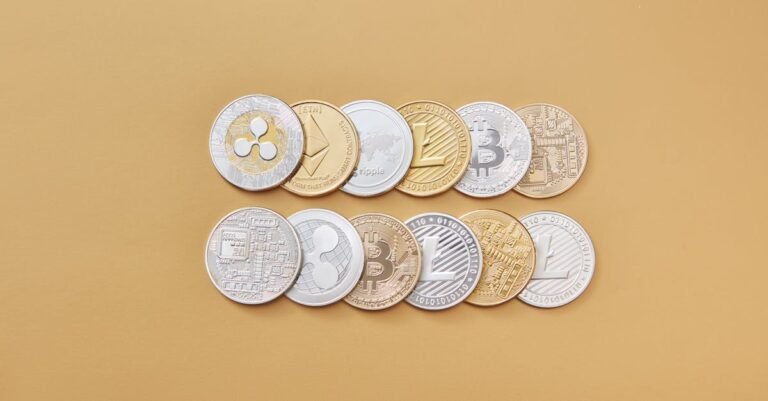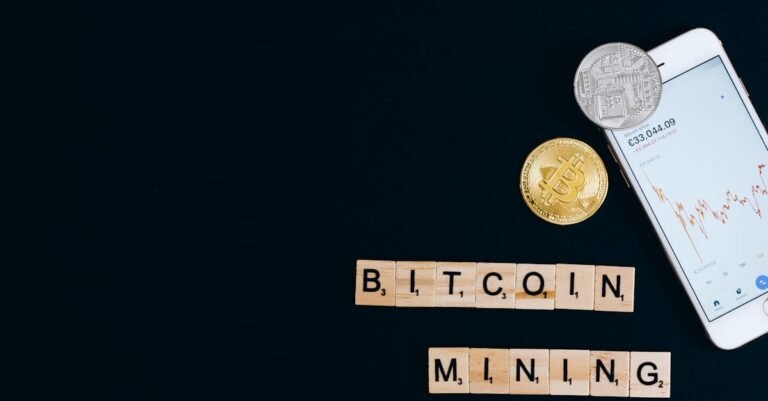Spotting Trouble Before It Starts: How to Identify Altcoin Red Flags
So, you’re diving into the wild world of altcoins? Exciting! It feels a bit like the digital gold rush, doesn’t it? You hear stories of people finding that hidden gem, that next big coin that skyrockets overnight. The potential is massive, and honestly, it’s easy to get swept up in the hype. But let’s be real for a second. For every success story, there are countless others that didn’t quite pan out. Some projects fizzle out, some turn out to be outright scams, and many investors end up holding digital dust.
That’s why learning how to identify altcoin red flags isn’t just helpful; it’s crucial for survival and maybe even success in the crypto space. Think of it like being a detective. You need to look past the flashy marketing and exciting promises to see what’s really going on underneath. It’s about protecting your hard earned money and making smarter decisions. I’ve seen my fair share of questionable projects, and learning to spot the warning signs early has saved me a lot of headaches (and money!). This isn’t about spreading fear, but about empowering you with knowledge. We’re going to walk through the common pitfalls and danger signals together, piece by piece, so you can approach altcoin investing with more confidence and less guesswork. Ready to put on your detective hat?
The Project and Team: Digging Deeper Than the Hype
Alright, let’s start at the foundation: the project itself and the people steering the ship. This is where so many potential altcoin investment warning signs first appear, often hiding in plain sight behind a slick website or a buzzword filled announcement. It’s easy to get caught up in a cool concept, but we need to look critically at whether it holds water and who exactly is promising to build it. Think of it like checking the blueprints and the builders before investing in a house.
First up, the whitepaper. This document is supposed to be the bible of the project. It should clearly explain what problem the project solves, how its technology works (the blockchain details, consensus mechanism, etc.), its unique selling proposition, the token’s purpose (we’ll dive deeper into tokenomics later), and the roadmap for development and launch. A good whitepaper is detailed, technically sound (even if you need help understanding parts), logical, and transparent. It should lay out a clear vision and a plausible path to achieving it. Now, what are the red flags here? Be incredibly wary of whitepapers that are vague, full of marketing fluff and buzzwords but lacking technical substance. If it reads more like a sales brochure than a technical document, raise an eyebrow. Another huge red flag is plagiarism. Believe it or not, some scam projects literally copy sections from other successful projects’ whitepapers. You can often check for this using online plagiarism checkers. Also, look out for unrealistic promises. If a whitepaper claims it will solve world hunger and revolutionize ten different industries by next Tuesday with technology that sounds like science fiction, it’s probably too good to be true. A solid crypto project analysis always starts with a critical read of the whitepaper. Don’t just skim it; try to understand the core proposal.
Next, let’s talk about the project’s actual use case. What problem is this altcoin really solving? Is it a genuine problem that needs a blockchain based solution, or is it just using blockchain because it’s trendy? Many questionable projects latch onto blockchain without a clear need, simply to attract speculative investment. Ask yourself: is there a real world demand for this? Could this be done better, faster, or cheaper with existing, non blockchain technology? Sometimes the answer is yes, and that’s a significant warning sign. Avoid projects targeting ridiculously niche markets with no clear path to adoption or those offering solutions to problems that don’t really exist. Think critically about the value proposition. Is it sustainable? Does it make economic sense? For example, a project promising decentralized pet grooming might sound fun, but does it *need* a blockchain, and is there a viable market? Probably not. These are important questions in your crypto due diligence.
Now, let’s get personal and look at the development team. This is one of the most critical areas to investigate. Who are the people behind this project? Are their identities known, or are they anonymous? While anonymity isn’t always a deal breaker (Satoshi Nakamoto, anyone?), it adds a significant layer of risk, especially for new, unproven projects. If the team is anonymous, ask why. If things go wrong, there’s no accountability. Ideally, you want a team with publicly known members who have relevant experience. Look for LinkedIn profiles. Do they have a history in technology, blockchain, finance, or the specific industry the project targets? What is their track record? Have they been involved in successful projects before? Equally important, have they been involved in failed or scam projects? A quick search on Google or crypto focused forums can sometimes reveal past controversies. Be wary of teams with no verifiable experience or whose LinkedIn profiles seem newly created or lack connections. GitHub activity can also be insightful. Are the developers actively committing code to the project’s repository? A dormant GitHub for a project claiming active development is a major red flag. Team transparency is paramount. A team that is hidden or has a shady past is a serious danger signal.
The project’s roadmap is another piece of the puzzle. A roadmap outlines the project’s planned milestones and development timeline. A good roadmap is detailed, realistic, and provides specific targets. Look for key steps like testnet launch, mainnet launch, feature rollouts, partnership integrations, etc. What are the red flags? Vague roadmaps with generic goals like “Marketing Push Q3” or “Platform Development Q4” without specifics are concerning. Constant, significant delays without clear explanations are also worrying. While development can face unforeseen challenges, a pattern of missed deadlines suggests poor planning, execution issues, or potentially, that the project isn’t actually being worked on seriously. Check if the team provides regular updates on progress towards roadmap goals. Lack of communication about progress is often a sign that things aren’t going well. Compare the roadmap promises with actual delivery. Is the team hitting its targets, even if slightly delayed with good reason?
Finally, consider claimed partnerships. Big name partnerships can add legitimacy and drive adoption for an altcoin project. However, this is an area ripe for exaggeration and outright lies. When a project announces a partnership, do your own verification. Don’t just take their word for it. Check the partner company’s official website or social media channels. Did they also announce the partnership? Sometimes, a project might claim a “partnership” when it’s merely using the other company’s publicly available service (like using AWS for cloud hosting, which isn’t a real partnership). Look for details about the nature of the partnership. What does it actually entail? Is it a deep integration, a joint venture, or just a loose marketing affiliation? Superficial or unverified partnerships are often used to create hype and pump the token price. Genuine, strategic partnerships that clearly benefit the project’s ecosystem are what you want to see. Be skeptical of projects name dropping dozens of huge companies without any proof. These initial checks on the project fundamentals and the team behind it are your first line of defense against potentially risky altcoins.
Tokenomics and Market Manipulation: Follow the Money
Okay, we’ve looked at the project’s foundation. Now, let’s dive into something equally critical: the money side of things. This involves understanding the altcoin’s tokenomics – the economics of the token itself – and learning to spot signs of market manipulation. This is where many crypto scams reveal their true nature, often hidden within complex distribution schedules or suspicious trading activity. Getting a grip on this helps you understand if the token is designed for long term value or simply to enrich the founders and early insiders quickly.
Let’s start with tokenomics. At its core, tokenomics covers how a cryptocurrency token works within its ecosystem. Key aspects include:
- Total Supply: Is there a maximum number of tokens that will ever exist (like Bitcoin’s 21 million), or is it inflationary with no cap?
- Circulating Supply: How many tokens are currently available on the market?
- Distribution: How were the tokens initially created and distributed? Was there a pre mine (tokens created before public launch)? How much went to the team, advisors, early investors, and the public sale?
- Vesting Schedules: If tokens were allocated to the team or early investors, how long are they locked up before they can be sold?
- Token Utility: What can the token actually be used for within the project’s ecosystem? Does it grant voting rights, access to services, staking rewards, or is it just used for payments?
Understanding these elements is vital. Now, let’s pinpoint the tokenomics red flags. A huge red flag is an unfair token distribution. If the development team and private/early investors hold a massive percentage of the total supply (say, over 50-60%), it creates significant sell pressure risk. They could dump their tokens on the market once they unlock, crashing the price for public buyers. Look closely at the vesting schedules. Short vesting periods (e.g., tokens unlocking just months after launch) for insiders are dangerous. Ideally, you want long vesting periods (years) that align the team’s long term interests with the project’s success. Be suspicious of projects that aren’t transparent about their token allocation. If you can’t easily find a clear breakdown of who owns what, that’s a warning sign. Another major red flag is a lack of clear token utility. If the token’s only purpose seems to be speculation or fundraising, its long term value is questionable. Why would anyone hold it if it doesn’t *do* anything within the ecosystem? Tokens need a reason to be held and used to generate genuine demand. Without utility, the price is purely driven by hype and speculation, making it extremely volatile and prone to collapse. Also, consider the inflation rate for tokens without a fixed supply. High inflation can dilute the value for existing holders unless there are strong mechanisms (like burning or increased utility) to counteract it.
Beyond the token’s design, we need to be vigilant about market manipulation. The relatively unregulated nature of crypto markets makes them susceptible to various schemes designed to artificially inflate prices or create false impressions of activity. One of the most common is the pump and dump (P&D) scheme. This involves a group of people coordinating to buy a low liquidity altcoin quickly, driving the price up (“pumping”). They heavily promote the coin on social media (often using misleading claims or hype) to lure in unsuspecting investors (FOMO – Fear Of Missing Out). Once the price hits their target, the original group sells off their holdings (“dumping”), causing the price to crash and leaving newer investors with significant losses. How can you spot potential P&Ds? Be wary of sudden, massive price spikes for a coin with little news or development updates. Check the trading volume – does it surge dramatically alongside the price pump? Look at social media channels – is there excessive, coordinated shilling (aggressive promotion) from multiple accounts using similar language? Often, these groups operate in private Telegram or Discord channels. Seeing calls to “buy now before it moons!” is a classic P&D tactic.
Another manipulation tactic is wash trading. This involves an individual or group simultaneously buying and selling the same asset to create fake volume and the illusion of high market activity or liquidity. This can make a coin appear more popular or stable than it actually is, potentially tricking algorithms or attracting real traders. It’s harder to spot definitively without exchange data, but you can look for suspicious patterns. Check the order book on exchanges. Does it look unusually thin despite high reported volume? Are there repetitive, identical buy and sell orders appearing close together? Does the volume seem unnaturally high compared to the coin’s market cap or community size, especially on smaller, less reputable exchanges? High volume concentrated on one or two obscure exchanges can also be a warning sign. These are significant blockchain red flags related to market integrity.
Liquidity itself is a crucial factor. Liquidity refers to how easily you can buy or sell an asset without causing a significant price change. Low liquidity is a major red flag for several reasons. Firstly, it makes the token highly susceptible to price manipulation (easier to pump and dump). Secondly, it means you might have trouble selling your tokens when you want to, especially if you hold a large amount. You might have to accept a much lower price than the current market quote (this is called slippage). Where is the token traded? Is it listed on major, reputable exchanges (like Binance, Coinbase, Kraken) or only on small, unknown decentralized exchanges (DEXs)? While DEX listings are common, ensure there’s a healthy liquidity pool, preferably with locked liquidity. Projects can provide liquidity on DEXs, but if they don’t lock that liquidity for a period, they can pull it out at any time (a “rug pull”), making the token instantly unsellable. Check tools like DexTools or PooCoin (use with caution, as these platforms also list scams) to view liquidity information for DEX tokens, including whether liquidity is locked. Lack of adequate liquidity on trusted platforms is a serious concern and makes it a risky altcoin.
Finally, analyze the token’s price history. While past performance isn’t indicative of future results, the chart can reveal warning signs. Look for extreme volatility that seems disconnected from the overall crypto market trends (e.g., Bitcoin’s price movements). Did the token experience a massive pump immediately after launch, followed by a steep and prolonged crash? This often indicates an initial hype cycle driven by insiders or early P&D activity, with little sustained value. Look at the distribution of holders using blockchain explorers (like Etherscan for Ethereum based tokens). If a very small number of wallets hold a vast majority of the circulating supply (excluding known exchange wallets or smart contracts), it represents a centralization risk and potential for manipulation or dumping. Performing this kind of financial scrutiny and tokenomics red flags analysis is a vital part of your crypto due diligence process. It helps you understand the real economic forces at play behind the hype.
Community, Communication, and Security: Gauging Trust and Safety
We’ve examined the project’s plan, the team behind it, and the economics of its token. Now, let’s explore the softer, yet equally vital, aspects: the community surrounding the project, how the team communicates, and the security measures in place. These elements provide crucial insights into the project’s health, transparency, and long term viability. Ignoring these can mean overlooking significant altcoin red flags that signal underlying problems or even potential disaster.
First, let’s talk about the community. Almost every crypto project has online communities, typically on platforms like Discord, Telegram, Reddit, or Twitter. An active, engaged, and genuinely enthusiastic community can be a positive sign. It suggests people believe in the project and are interested in its development. However, you need to learn to differentiate between a real community and a manufactured one. What are the red flags here? Be cautious if the community channels are filled overwhelmingly with hype, price speculation (“When moon?”, “Buy the dip!”), and aggressive promotion (shilling) rather than substantive discussion about the technology, use cases, or development progress. Look out for excessive use of bots posting generic positive comments or announcements. A healthy community allows for critical discussion and questions. If you see members being immediately banned or shouted down for raising valid concerns or asking tough questions, that’s a massive red flag. It suggests the team is trying to create an echo chamber and suppress dissent, often a sign they are hiding something. Also, gauge the overall sentiment. Is it genuinely positive and constructive, or does it feel desperate, angry, or cult like? An overly defensive or hostile community can be a warning sign. Performing a thorough crypto project analysis includes spending time lurking in these community channels to get a real feel for the atmosphere and the quality of discussion.
Closely related to the community is the team’s communication style and transparency. How does the core team interact with its community and the public? Are they open, honest, and responsive? Regular updates on development progress, challenges, and roadmap adjustments are crucial. Look for detailed blog posts, AMAs (Ask Me Anything sessions), and active engagement from team members in the official channels. Red flags include teams that go silent for long periods, especially during critical phases or market downturns. Avoid teams that are evasive when asked difficult questions about tokenomics, delays, or security concerns. If their communication consists primarily of marketing hype, price predictions, or blaming external factors for failures, be wary. Transparency is key. Do they clearly communicate about partnerships, financials (if applicable, like treasury management), and team token movements? A lack of transparency is one of the most significant altcoin investment warning signs. Trust is built through open and honest communication, and teams that fail at this often have something to hide.
Security is paramount in the crypto space. Smart contracts, which govern how many altcoins function (especially DeFi projects), can contain vulnerabilities that hackers can exploit, leading to devastating losses. A major green flag is when a project has undergone security audits by reputable, independent third party firms (e.g., CertiK, ConsenSys Diligence, Trail of Bits, OpenZeppelin). These audits involve experts scrutinizing the project’s code for flaws. What are the red flags? The most obvious is a complete lack of any security audit, especially for projects handling user funds or complex logic. Be suspicious if a project claims to be audited but doesn’t provide a public link to the audit report. If they do provide a report, actually look at it! Don’t just see the auditor’s name and assume everything is fine. Check the report’s findings. Were critical vulnerabilities discovered? If so, did the team fix them? The report should detail the issues and the team’s remediation efforts. Audits by unknown or seemingly unqualified firms are also less reassuring. Furthermore, security isn’t just about smart contracts. Consider the security of the project’s website, user data handling practices (if applicable), and the operational security of the team itself (e.g., protecting private keys). A cavalier attitude towards security is a serious blockchain red flag.
Don’t underestimate the power of a professional online presence, but also don’t be fooled by superficial gloss. Examine the project’s website and social media profiles. Do they look professional and well maintained? Are there numerous spelling errors, grammatical mistakes, or broken links? While not definitive proof of a scam, a sloppy presentation can indicate a lack of attention to detail or resources. Conversely, an overly flashy website filled with stock photos and vague promises but lacking substance can also be a red flag – prioritizing marketing over development. Check the consistency and quality of their social media activity. Are they providing valuable updates and engaging with users, or just posting memes and price charts? A sudden drop off in activity or a drastic change in messaging can be concerning. Look for consistency across platforms. Does the information on the website match what’s said on Twitter and Discord?
Consider the regulatory landscape. While the crypto world is still evolving in terms of regulation, projects that seem to be deliberately operating in legally grey areas or actively defying potential regulatory requirements pose an additional risk. Is the project potentially selling an unregistered security? Is it operating in jurisdictions where its activities might be restricted? While this is a complex area, being aware of potential regulatory risks is part of comprehensive crypto due diligence. Projects that ignore these aspects might face shutdowns, fines, or legal battles that could negatively impact token holders.
Finally, never underestimate your gut feeling. After doing all your research – reading the whitepaper, investigating the team, analyzing the tokenomics, observing the community, and checking security – step back and ask yourself: does this feel right? Does anything seem off, even if you can’t quite put your finger on it? Are the promises too good to be true? Is the hype disproportionate to the actual progress or substance? Sometimes, our intuition picks up on subtle inconsistencies or warning signs that our logical analysis might miss. If a project feels sketchy or raises too many unanswered questions, it’s often wise to simply walk away. There are thousands of altcoins out there; you don’t need to invest in one that makes you uncomfortable. Trusting your gut, backed by thorough research, is a powerful tool for avoiding risky altcoins.
Key Takeaways
Navigating the altcoin market requires vigilance. We’ve covered a lot of ground, focusing on the critical areas where red flags often appear:
- Project & Team: Scrutinize the whitepaper’s clarity and technical depth, validate the project’s real world use case, investigate the team’s transparency and track record, and check the realism of the roadmap and partnerships.
- Tokenomics & Market: Analyze token distribution for fairness, ensure the token has genuine utility, be wary of pump and dump schemes and wash trading, check for adequate liquidity on reputable exchanges, and look for signs of manipulation in price history.
- Community, Communication & Security: Evaluate community health beyond superficial hype, demand transparent and consistent communication from the team, verify security audits from reputable firms, assess the professionalism of their online presence, and never ignore your gut feeling.
Navigate Wisely and Stay Safe
Investing in altcoins carries inherent risks, and let’s be clear: even thorough research doesn’t guarantee success. The crypto market is volatile and unpredictable. However, by learning how to identify altcoin red flags and consistently applying rigorous crypto due diligence, you dramatically shift the odds in your favor. You move from being a gambler swayed by hype to an informed investor making calculated decisions.
Remember, the goal isn’t to find foolproof investments—those don’t exist. The goal is to filter out the obvious scams, the poorly conceived projects, and the tokens designed primarily to enrich insiders at your expense. It’s about protecting your capital so you can deploy it towards projects with genuine potential and a higher likelihood of long term value creation.
Doing your own research (DYOR) isn’t just a catchy phrase; it’s the cornerstone of responsible crypto investing. Take the time, put in the effort, and trust your analysis. Be skeptical, ask hard questions, and don’t invest more than you can afford to lose.
Now I turn it over to you! What are some of the biggest altcoin red flags you’ve encountered? Share your experiences or tips in the comments below – let’s help each other navigate this exciting but challenging space more safely!









